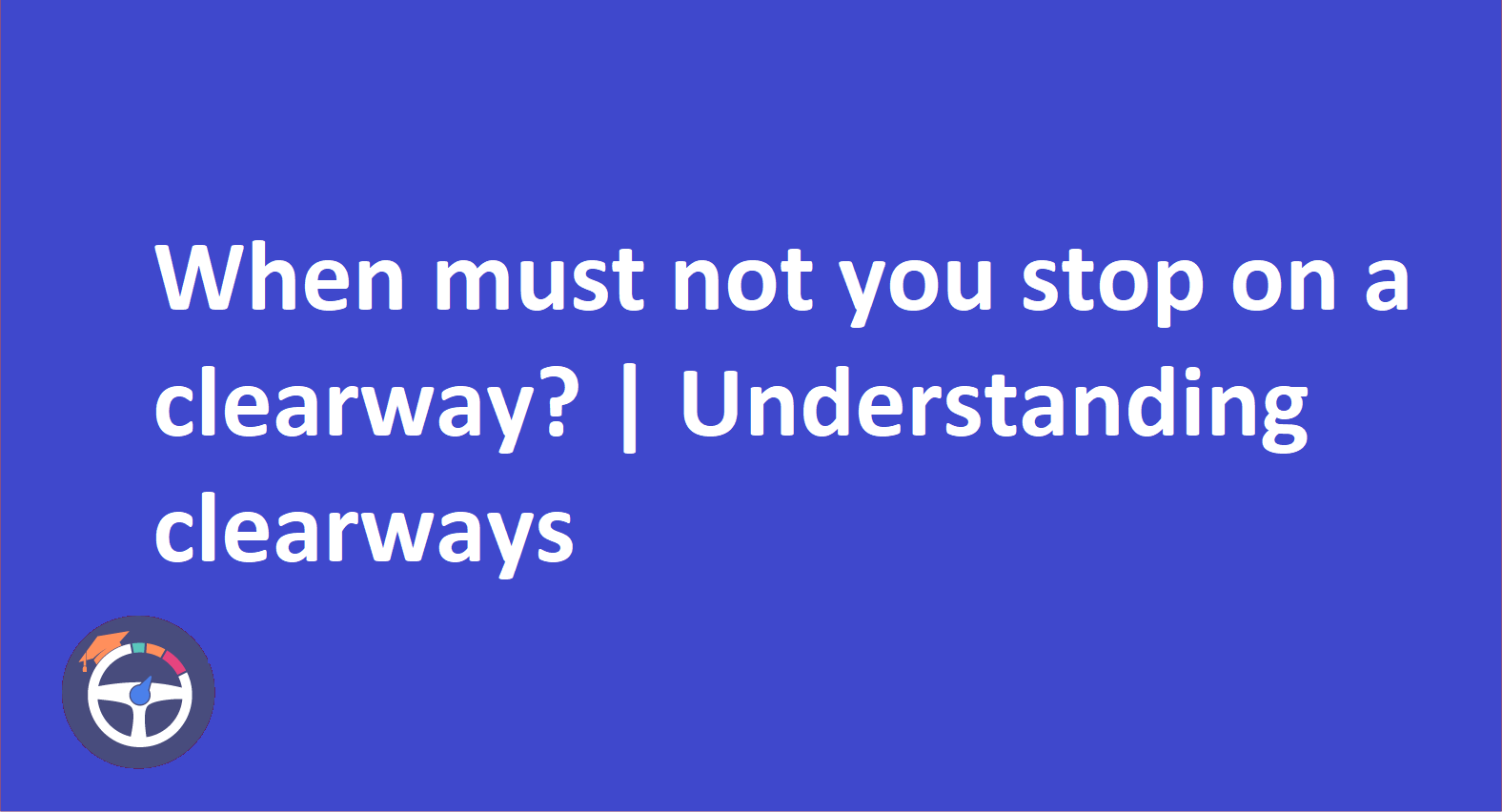Where will you see these red and white markers?
By Umm e Hani on May 09, 2024Contents
- Understanding the Basics
- Where to Spot Them?
- Railroad Crossings
- Highway Crossings
- Rural Roads
- Urban Crossings
- Red and White Striped Posts
- Painted Road Markings
- Warning Signs
- Importance of Red and White Markers
- Stop and Look
- No Overtaking
- Be Aware of Signals
- Stay Behind the Line
- Navigating Red and White Road Markers during the UK Theory Test
- That’s A Wrap!
- FAQ
Driving through the roads of the UK is a journey that demands not just skill behind the wheel but also a keen understanding of the language of the road. As aspiring drivers gear up for the UK Theory Test, one crucial aspect to master is the significance of red and white road markers. Especially near concealed level crossings. In this guide, we'll focus on their role in ensuring safe travels.
Understanding the Basics
Let's talk about the colors red and white on the roads. They are not just there to look nice; they're like a special code telling us important things. Imagine them as a way the road talks to us, warning us about something. When it comes to hidden train crossings, these colors on the road are like quiet guards, warning drivers about possible dangers up ahead.
Where to Spot Them?
Railroad Crossings
A primary location for red and white road markers is at railroad crossings. As you approach these crossings, keep a keen eye for these distinctive markers, which indicate that you are nearing a point where road and rail intersect. The combination of red and white isn't just a coincidence – it's a deliberate choice to enhance visibility and grab your attention.
Highway Crossings
Beyond the local roads, red and white markers are commonly found on highways where roads intersect with railways. The high-speed nature of highways makes these markers even more crucial, demanding immediate attention from drivers. Remember, quick comprehension is key to safe driving.
Rural Roads
It's not just the bustling highways; even serene rural roads can harbor concealed level crossings. The juxtaposition of calm surroundings and potential danger reinforces the need for vigilance. The red and white markers are your allies in navigating these seemingly tranquil terrains.
Urban Crossings
In urban landscapes, concealed level crossings might be nestled amidst the hustle and bustle. The markers serve as a stark contrast against the urban backdrop, signaling that drivers need to exercise caution even in the midst of city life.
Red and White Striped Posts
Imagine cruising down a road and suddenly spotting red and white striped posts. These eye-catching markers serve as a clear indication that a concealed level crossing lies ahead. Their distinct pattern demands attention, acting as a visual alarm for drivers to proceed with caution.
Painted Road Markings
Keep a keen eye on the road surface as you drive. Red and white road markings, such as painted lines or patterns, highlight the presence of a concealed level crossing. These markings act as a tangible guide, reinforcing the need to reduce speed and approach the area with heightened awareness.
Warning Signs
Complementing the visual cues are warning signs equipped with red and white elements. Strategically placed before concealed level crossings, these signs emphasize the importance of being prepared for potential hazards ahead. Ignoring these signs could mean overlooking critical information that could impact your safety on the road.
Importance of Red and White Markers
Now that you know where to find these red and white markers, let's look into their significance:
Stop and Look
When you encounter these markers, it's not just a suggestion; it's a directive. Come to a complete stop, look both ways, and listen for any oncoming trains. The combination of these actions ensures that you're well-prepared to navigate the crossing safely.
No Overtaking
The red and white markers also signify a no-overtaking zone. It's not the time to speed past the vehicle in front of you. Exercise patience and maintain a safe distance to ensure you have a clear view of the crossing.
Be Aware of Signals
In tandem with the road markers, pay attention to any accompanying signals. These could include flashing lights, bells, or barriers. Each element works together to provide a comprehensive warning system, leaving no room for ambiguity.
Stay Behind the Line
Many concealed level crossings have marked lines on the road. These lines indicate a safe distance from the tracks. Always ensure your vehicle is behind these lines when stopped at the crossing.
Navigating Red and White Road Markers during the UK Theory Test
As you prepare for the UK Theory Test, familiarize yourself with the specifics of red and white road markers. The test may challenge your ability to recognize and interpret these markers, emphasizing the importance of responsible and informed driving.
That’s A Wrap!
Embrace the caution red and white road markers symbolize. Approach concealed level crossings with the respect they deserve. Your safety and the safety of those around you depend on your ability to decode these markers swiftly and respond accordingly. Happy driving!
FAQ
1. What do red and white road markers signify near concealed level crossings?
Red and white road markers near concealed level crossings act as silent guards, warning drivers about potential dangers ahead. They are like a special code that the road uses to communicate important information.
2. Where are red and white road markers commonly found in the UK?
These markers are commonly found at various locations, including railroad crossings, highways, rural roads, and urban landscapes. Even red and white striped posts and painted road markings serve as indicators of concealed level crossings.
3. Why is it crucial to pay attention to warning signs with red and white elements?
Warning signs equipped with red and white elements are strategically placed before concealed level crossings. Ignoring these signs could mean missing critical information about potential hazards, emphasizing the need for responsible and informed driving.
4. What actions should drivers take when encountering red and white road markers?
Drivers should adhere to the directives associated with these markers. This includes coming to a complete stop, looking both ways, and listening for oncoming trains. The markers also indicate a no-overtaking zone, emphasizing the importance of patience and maintaining a safe distance.
5. What if I miss a red and white sign? Will I get penalized?
Missing a sign is like skipping a beat, but penalties depend on the situation. Some signs, like stop signs, are non-negotiable. Others might just result in a friendly reminder from law enforcement. Stay vigilant – red and white signs are there for a reason.


